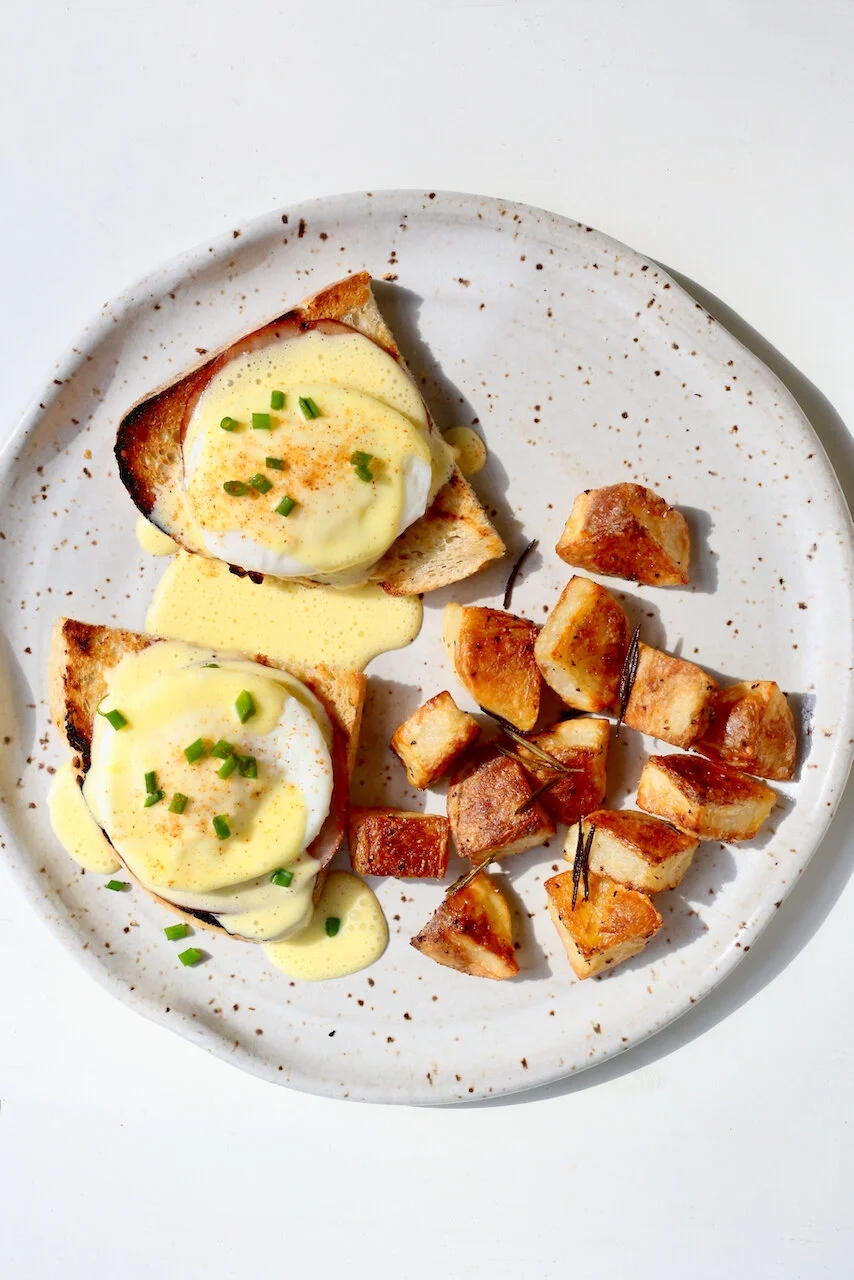World’s Easiest Poached Eggs
If I had to guess the number of poached eggs I’ve totally ruined through the ever popular vortex, or made acidic and inedible courtesy of the vinegar method — honestly, I can’t guess. Lots.
Poached eggs are scary as hell. Of all the ways you could possibly cook an egg, poaching is by no means considered easy. Poached eggs, for me, were a restaurant-only delicacy that I wouldn’t have dared to attempt on my own. Yes, over the years I figured it out, but it wasn’t until recently that it became a go-to breakfast for me.
Enter, the sieve method. I quite literally have no idea where this originated. I even Googled tirelessly in hopes of discovering who the brilliant mind was that came up with this foolproof method that churns out egg after perfect egg… To no avail. This person deserves a Nobel Peace Prize, and nothing less.
Here’s what happens: when you strain each egg through a fine-mesh sieve, you’re allowing all the loose egg whites (which later become the pain-in-your-ass scraggly bits that are impossible to get rid of) to fall off the egg entirely. The egg that you’ll eventually slide into barely-simmering water will stay in one piece, come hell or [boiling] water. Wispy bits, no more!
Why am I so obsessed with this method? For one, this is truly the world’s easiest method for poached eggs. Frankly, and I’ll admit that this is a hot take, there’s less room for error than frying or scrambling. No dry eggs, and no flip-induced yolk emergencies. More time-consuming, but even when I’m cooking breakfast for one I can get a mouth-watering runny egg on top of a blissfully buttery slice of toast in under ten minutes. I’m not lying!
Reason #2: you can make a big ol’ batch of these poached eggs and throw a hell of a brunch party. Sieve your egg, remove to a large bowl, repeat. Fill that bowl as much as you want (they won’t stick together!) and pour them into your simmering water one by one, all at the same time. So long, poached egg vortex!
All this to say, please give this a try, OK? I promise it’s way easier than you think, and it juuuuust might become your go-to breakfast. Plus, we all deserve a little #yolkporn in our lives.
World's Easiest Poached Eggs
Ingredients:
- 1 egg (the fresher, the better!)
- Optional: Buttered toast, salt & pepper (for serving)
- Nonstick pot
- Slotted Spoon
- Paper Towel
- Fine-mesh metal sieve (something like this)
Instructions:
- Heat approximately 2-3 inches of water in a pot until barely simmering. The operative word here is barely — you want to see some bubbles and steam, but you certainly do not want a full boil.
- Meanwhile, crack an egg into a fine-mesh metal sieve set over your sink [This is a must! If you don't already have one, they're a wonderful investment and have many purposes]. Let the runny bits of egg white strain through the sieve by giving it a gentle jiggle, being careful not to break the yolk. The longer it strains, the better.
- Carefully slide your egg into the boiling water, and set a timer for 3 minutes. I've found that 3 1/2 minutes is usually the time it takes for runny yolks and just-set whites, but eggs vary in size (especially after the straining process).
- After 3 minutes, carefully remove the egg from the water with a slotted spoon. Give it a slight jiggle. Are the whites completely cooked? If not, return to the water once again. Repeat this test after another 30 seconds.
- When the whites are set and the yolk is still jiggly and soft, carefully blot the bottom of the spoon (and sides of the egg) with a paper towel. This will soak up any excess water.
- Serve any way you'd like. My preference is on a buttered piece of toast with lots of salt & pepper.

